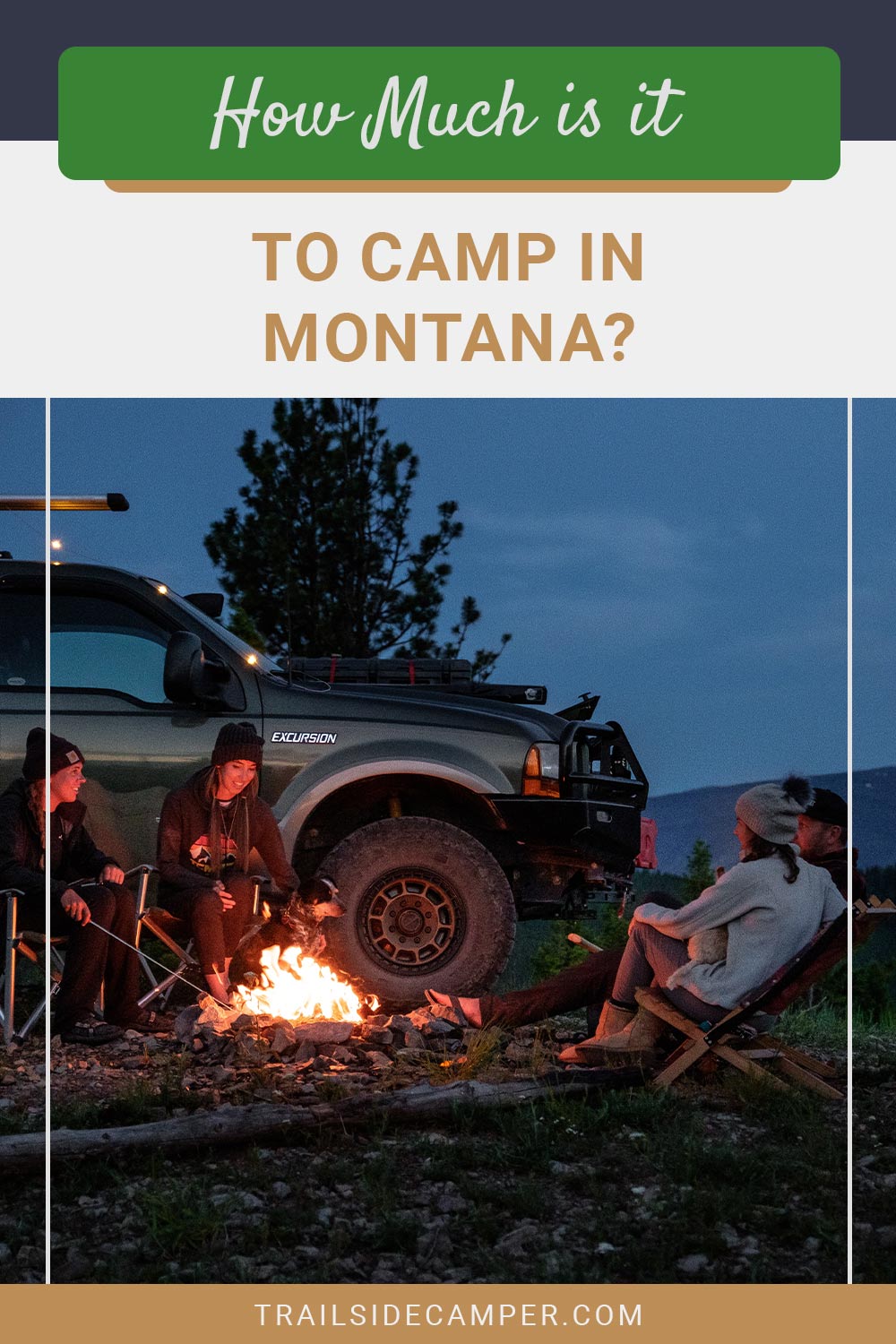Montana is beautiful! They don’t call it the Big Sky state for nothing. I remember taking my first drive into Montana after a long haul from Texas. It was nighttime as I crossed over the Wyoming border into Montana.
It felt like I had entered a whole different world. The hills opened up, and the moonlit an immense night sky I have ever seen. The stars were shining, and it felt like the countryside went on forever.
Ok, enough daydreaming, let’s go camping! The price of camping in Montana varies depending on the location, time of year, and amenities you may require.
However, you can expect to pay anywhere from free for basic camping to a whopping $1800 per night for a glamping experience. There are ways to save money when camping in Montana.
No matter what your budget happens to be, you will be in awe of the beauty and immensity of the state.
What are the Average Campsite Fees?
There are a variety of factors that will affect the price of camping in Montana. If you’re looking to camp during the peak season, you can expect to pay more than if you camp during the off-season.
Additionally, if you require additional amenities like hookups for your RV or a fire pit, you will also pay more. An additional factor is the required wilderness use permit to stay in the backcountry of National Parks.
National park campsites can cost between $10 and $23. State parks can run between $4-$34 for campsites with various amenities. There are also private companies that offer campsites for patrons.
For these locations, you may expect anywhere from $25 – $60 a night plus service fees and any additional charges that the organizations require. Then you have those outliers, such as the $ 1,800-a-night glamping option.
Can You Camp for Free in Montana?
If $1800 is a bit out of your price range, you can always go to the opposite end of the spectrum and find something free.
Boondocking is the perfect option for you if free sounds like your kind of price. There are many boondocking options as well. For instance, Bear Creek Campground near Gardiner offers first come, first served dispersed sites.
If you are an angler, take a look at Ashley Lake North Campground. Boondocking is an adventurous option. You will not have access to services, no water; no trash removal; no fire pits, and so on. However, use permits may still be required to access these locations.
What is the Maximum Stay?
Each location has its maximum stay limits. Even within the same park, there may be different stay limits. For example, Montana State Parks’ limit stays to 14 days in a 30-day period.
National Parks in Montana have similar limits though they differ by season. As of right now, July 1st – through Labor Day has a limit of 14 days, while Labor Day to June 30th allows for 30 days all at once or combined between different trips.
Each agency or private organization is going to have its requirements for camping, so always check ahead and make sure you know what to expect.
Is it Legal to Camp on State Land?
It is legal to camp on state land. I would dare to say that it is even encouraged. If more people fall in love with the wilderness and all the beauty it holds, hopefully, those folks will be more passionate about protecting these spaces.
Many state parks in Montana even offer learning and education along with their camping options. Anything from interpretive trails to history programs, even seasonal festivals.
I recently stayed at a state park, and one park ranger was letting my son greet other patrons as I paid for our camping trip. I feel like this has become repetitive to say but necessarily so, always check with the location to which you plan to go.
While in normal situations, a certain location may be legal to camp in, there could be closures due to any number of circumstances.
What is BLM Land in Montana?
BLM Land, or Bureau of Land Management Land, belongs to the U.S. Department of the Interior. It is land set aside for public use. These uses can include camping, livestock grazing; restoration and protection of natural and historic resources; and much more.
The important aspect here is that, again, it’s set aside for public use. If you wish to camp with no amenities except for the item you bring with you, then dispersed camping is free on BLM land.
However, BLM land does offer developed sites. A fee is required at developed sites which helps maintain the facilities and programs provided. While you are camping on BLM land, make sure to check out their various and vast recreation opportunities.
Final Thoughts on the Cost of Camping in Montana
Hikers and campers alike are asked to carry out what they carry in. This is so important when it comes to camping. Trash and debris can accumulate quickly, so always be prepared and have a way to remove what you brought with you.
Many of the built-up campsites will have water disposal, trash receptacles, and even toilets and showers. But with boondocking and wilderness camping, you’ll have more responsibility to remove every trace of you that has ever been there.
The U.S. National Parks have seven principles of Leave No Trace, all centered around maintaining yourself and your equipment with as little impact on the environment as possible.
Ok, my final thought is this, and every Park Ranger will agree with me and probably has nightmares of repeating this mantra, “know before you go.” Always check with your destination before setting out.
Make sure spots are available, ensure you do or do not need an entry permit or reservations, and check if there are any weather closings or any other myriad of things that could put a damper on your fun.

